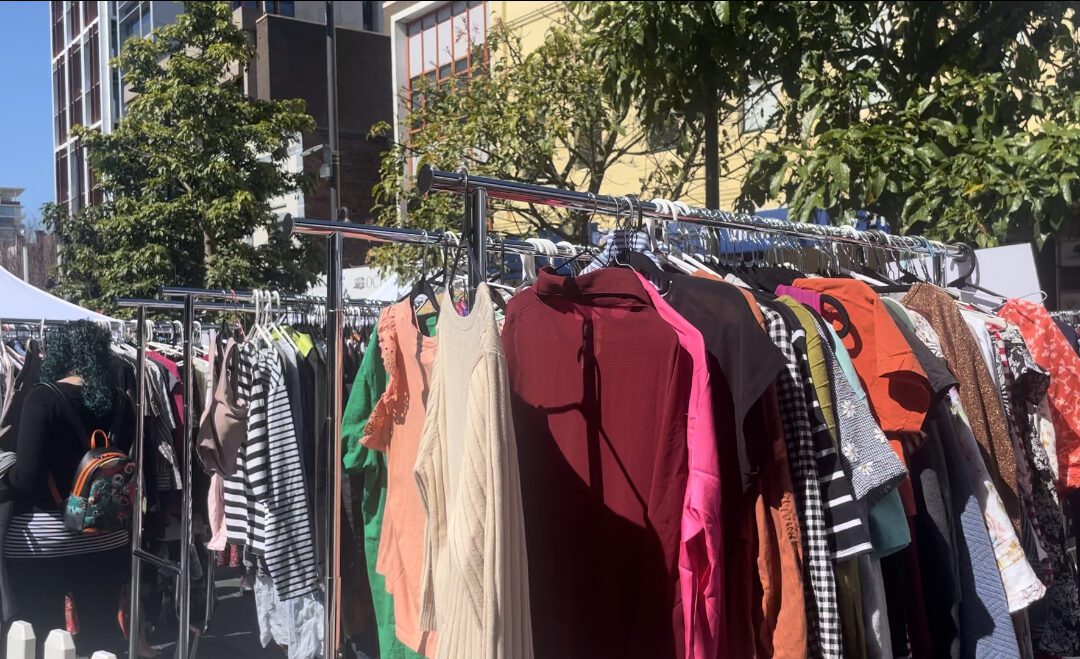The once beloved thrifting trend is now being swapped out for its fast fashion rivals after shoppers share pricing rise on TikTok.
Thrifting had a rebirth in the late months of 2020 through social media platform TikTok.
Whilst the trend was mostly embraced in support of sustainable fashion, some shoppers are reluctantly returning to online fast fashion due to a pricing boom.
TikTok users are now taking to the platform to accuse Op shops across Australia, of upping their prices.
@thepreluv INFLATION IS A 🤫 #thriftfinds #thriftstorefinds #vintagefinds #thrifthaul #thriftlife #sustainablefashion #prelovedfashion #thriftcommunity #thriftaddict #thriftedtreasures #thriftingfinds #thriftingadventures #thriftstorescore #sydney #opshop #opshopfinds #opshopping #shop #reseller #resellingcommunity
According to a report conducted by online retailer Reluv, in collaboration with Monash University students, the Gen-Z market is more likely to travel in-store for Op shopping by over 46 per cent.
This holds truth amongst students who use thrifting as a cheap alternative to larger retail outlets, however, some are no longer finding this to be the case.
Student, Nicholas Valleau, was once an avid vintage clothing lover but is now struggling to maintain this habit.
“It’s sad because I genuinely used to get enjoyment from sorting through the racks and seeing what I could find,” Mr Valleau said.
Mr Valleau explained that he never remembered thrifting to be so expensive and has noticed a dramatic price increase across Illawarra’s Op shops.
“I used to be able to pick up a pair of jeans for like twenty bucks, but I haven’t seen prices like that for ages,” Mr Valleau said.
@reishysushi Thrifting: Part 9 – Vinnies are so expensive nowadays 🙃 #thrift #thrifting #thriftshop #opshop #thrifttok #opshopfinds #thrifthaul #opshopfindsaustralia #vinnies #sydney #thriftshopping
Hospitality worker, Maddison Chenoweth, has come across a similar struggle and is now resorting to purchasing from fast fashion shops in retaliation.
“I know it’s a bit controversial, but I use Shein a lot these days.” Ms Chenoweth said.
Despite the shift back to Shein, Ms Chenoweth noticed fast fashion clothing also making its way into Op shop clothing racks.
The cycle of fast fashion making its way into mainstream fashion, is shocking shoppers like Ms Chenoweth, especially the price that they are being sold for.
“I’ve seen some fast fashion clothing for double the price at Op shops,” Ms Chenoweth said.
Manager at University of Wollongong’s (UOW) Green Connect Op shop, Stephanie Thakray, has noticed fast fashion items coming through the clothing donations they receive.
“We get a bag of clothing through donations a day, which mostly comes from our Unanderra branch,” Ms Thakray said.
“In this bag we normally find one or two fast fashion pieces, mostly from Shein.”
The pricing increase amongst Op shops is something Ms Thakray acknowledges, but hasn’t found to be the case at the UOW store.
“The average clothing price ranges from eight to fifteen dollars,” Ms Thakray said.
Regarding setting prices, the UOW shop follows a pricing guide that factors in the brand and overall quality of the pieces they receive.
The debate over Op shopping and fast fashion generally comes down to consumer choice and what works best for them.
Whilst fast fashion may be cheaper in some cases, this can also be reflected in it’s quality.
“Fast fashion is very cheap and not made to last, we can spot them when they come in,” Ms Thakray said.
“If you’re looking for good quality clothing that is made to last, you can find those pieces in our OP shop.”
To find updates and more on the Green Connect Op Shops, click here.

